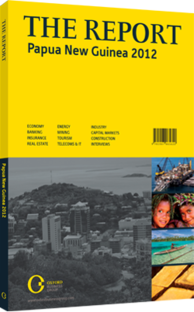Into the jungle: Trekking along the Kokoda Trail
Running 97 km along the central mountain range in Papua New Guinea, the Kokoda Trail played an important part in the history of the Second World War in PNG. Beginning at Owers’ Corner on the southern side of the Owen Stanley Range, it runs across the mountains to the Kokoda plateau in the Yodda Valley. From Kokoda, the track slips down towards the sea on the north coast.
GAINING A FOOTHOLD: The story of the Kokoda Trail starts in the late July of 1942 when Japanese troops landed on the northern coast of then New Guinea and began marching south over the Owen Stanley Range. Their aim was to capture the airstrip between Port Moresby and the north coast and eventually move on to Port Moresby, the capital. Control of Kokoda’s airstrip was critical to the Japanese strategy and would have determined the success of the invasion.
Australian brigadier Arnold Potts led 1500 men against the Japanese advance in an attempt to stop the 10,000-strong force from reaching the capital. The Australian intervention marked one of the bloodiest campaigns of the Second World War and sealed the ties between PNG and Australia. More Australians died in the seven months of fighting in Papua than in any other campaign. They now lie buried at the Boumana War Cemetery outside of Port Moresby.
Working alongside the Australians was a local contingent without whose support the number of Australian casualties would have been much larger. “Fuzzy wuzzy angels” was the name given to the handful of Papua New Guineans who assisted and escorted Australian troops down the trail during the campaign. They were named as such because of their frizzy hair and helpful role, and are immortalised in the eponymous poem by Bert Beros, an Australian combat engineer.
COMMEMORATIVE MARCH: The path trekked by the battling forces can be retraced and experienced in a nine-day guided trip along the Kokoda Trail. Tour providers offer different options varying in length from seven to nine nights. Fitness and proper preparation is essential along the often gruelling trail. The tour starts in Port Moresby with the first day largely taken up with travel from the capital to Kokoda followed by sightseeing summarising the events of the Second World War leading up to the battle.
RELIVING THE MEMORY: The campaign comprised two phases: July-September 1942, when the Japanese were in the ascendant and pushing towards Port Moresby, and October-November when the Allies gained control and began forcing the Japanese back.
From Kokoda, the trail follows the Australian retreat in August of 1942 with a six-hour trek through the jungle to Isurava. This is the site of a battle in which a significantly outnumbered Australian platoon fought off 11 separate Japanese attacks; a battle that produced more military decorations than any other in the Pacific front. From here the trek follows the 3.2-km retreat from Eora Creek over a steep and slippery trail to Templeton’s Cross where the Japanese made a serious stand against the advancing forces in September 1942. On the next day, the tour treks from here to Kagi, passing through the jungle and Myola, a resting stop for the Australian troops that turned into a battleground.
The following day, the trek runs by Efogi and Brigade Hill to Menari, past one of the worst battles along the trail, which saw heavy casualties on both sides, especially for the Japanese, who lost 200 men. The next day involves a short, steep trek from Menari to Naoro, which was a low point for the retreating Australians.
The final two days of the nine-day trek retrace the route from Naoro to Owers’ Corner, passing through Va’Ule Creek. It is here that the tide turned in the battle, as the Australian forces retreating from Naoro were joined by reinforcements at the Ioribaiwa Ridge. This advancing battalion was fresh, better trained and more accustomed to the jungle combat conditions. The reinforcement succeeded in pushing back the Japanese troops, who were tired, worn out and almost starving.
The last day is a climb to the summit of Imita Ridge, retracing the footsteps of the Australian’s final retreat covering ground on which the Japanese never marched.
You have reached the limit of premium articles you can view for free.
Choose from the options below to purchase print or digital editions of our Reports. You can also purchase a website subscription giving you unlimited access to all of our Reports online for 12 months.
If you have already purchased this Report or have a website subscription, please login to continue.

